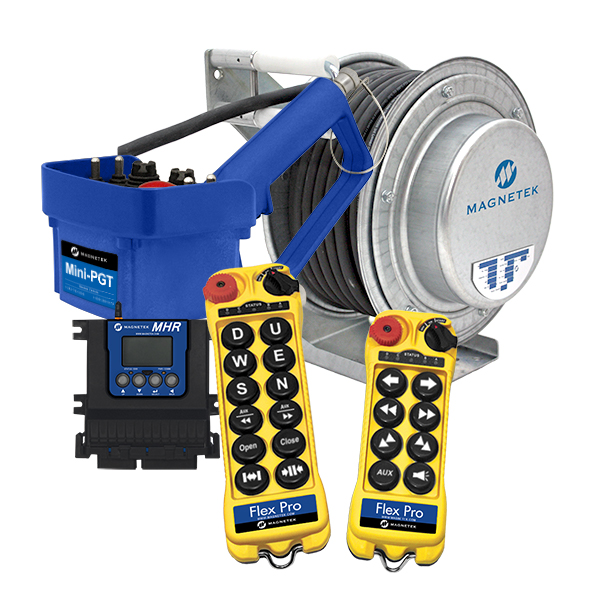)
Magnetek to Exhibit Mobile Hydraulic Wireless Controls at IFPE 2017
Magnetek Inc, a leading provider of digital power and motion control systems, will be exhibiting at IFPE 2017, co-located with ConExpo-CON/AGG at the Las Vegas Convention Center, Las Vegas 7-11 March. Visitors to the Company’s booth, will be able to test a variety of Magnetek’s wireless controls, including the patented MHR Radio Controller, Flex Pro transmitter, and Mini-PGT transmitter. The Company’s new cable reel product line will also be on display.
Magnetek cable reels are designed to be mounted on moving machinery and used to supply power for the automatic winding of flexible power or control cables. “A cable reel is a superior solution to effectively and compactly manage large lengths of cable,” said Ben Stoller, Magnetek’s director of radio controls. “Cable reels can be packaged with any of Magnetek’s industry-leading power and motion control products, making it easier for customers to customise systems to fit their exact needs.” Magnetek offers both spring-driven and motorized electric cable reels, as well as slip ring assemblies.
The patented MHR radio controller combines the components of a radio receiver, CAN-bus display module, and hydraulic valve controller into a convenient single unit, saving money and freeing up valuable space on the vehicle. When packaged with a transmitter, the MHR provides a total radio control system. The Flex Pro transmitter easily adapts to specific applications, offering a versatile and precise mobile hydraulic control option for improving performance, productivity, and safety. As part of Magnetek’s range of mini wireless controls, the Mini-PGT incorporates the latest electronic technology in a compact and lightweight case. Mini-PGT features many of the controls found on Magnetek’s larger pistol-grip transmitters but in a size, weight, and style similar to most handheld transmitters.
Magnetek’s innovative, cost-effective wireless controls complete with plug-and-play hydraulic interface controls are designed to meet customer specifications, reducing internal engineering and manufacturing costs, improving time to market, and enhancing equipment performance.











